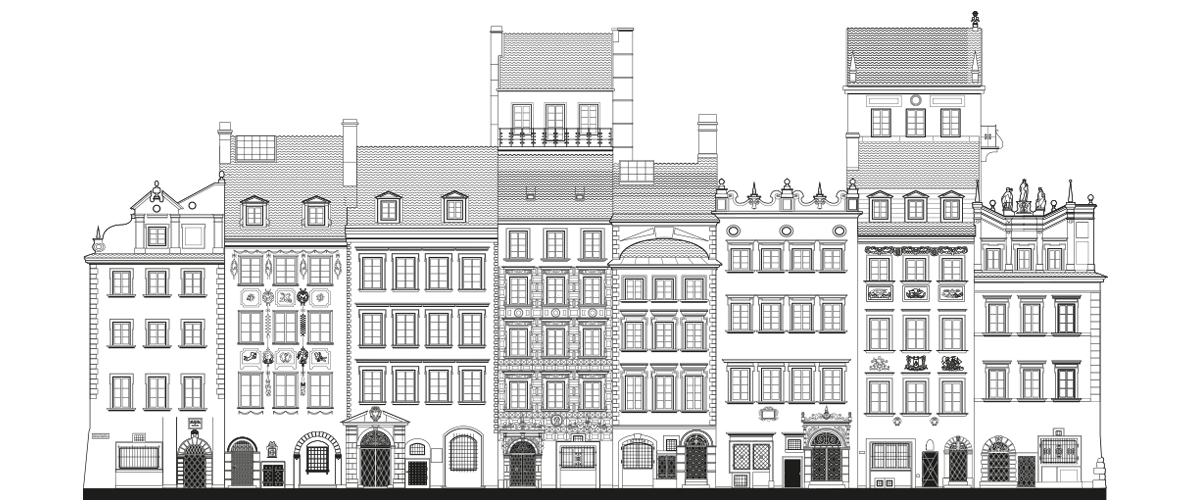EXHIBITIONS

History of Old Town Houses

The Museum comprises eleven houses on the northern side of the Market Square, which was marked out around 1300. Gothic brick build ings began to emerge here in the mid-15th century. The fire of 1607 pro vided an impulse for yet another architectural alteration, which gave the houses a shape resembling what we see today. The wealthiest and most powerful families, councillors, vogts and mayors of Old Warsaw lived here. In the 19th century, the economic, cultural and administra tive centre of Warsaw moved beyond the walls of the Old Town, which suffered a slow degradation.
The first actions to preserve the monuments of the Old Town were associated with the Society for Protection of the Monuments of the Past, which was the owner of the Baryczka House (no. 32) since 1911. In 1916, on the anniversary of the Constitution of 3rd May (1791), the northern side of the Market Square was named Dekert’s Side in honour of Jan Dekert (1738-1790), Warsaw’s president and burgher rights campaigner.
In 1937-1938, the municipal authorities purchased the Baryczka House and the neighbouring Kleinpold (no. 34) and Under the Negro Houses (no. 36) for use of the Museum of Old Warsaw, a branch of the National Museum. The process of transforming the houses into a museum was disrupted by the outbreak of World War II. Destroyed during the Warsaw Uprising, the houses on Dekert’s Side were rebuilt in 1947-1953. The first exhibition opened in 1955.
The history of the changes to the structure of the Dekert’s Side and the architectural elements of specific houses provide a perspective from which to explore the events and figures related to this place. They are presented in the section of the exhibition devoted to them and in the notes distributed throughout the Museum houses, which you can discover during your visit.
Curators: Barbara Hensel-Moszczyńska, Klementyna Świeżewska
Graphic design: Joanna Bębenek, Maciek Chodziński, Ania Światłowska


